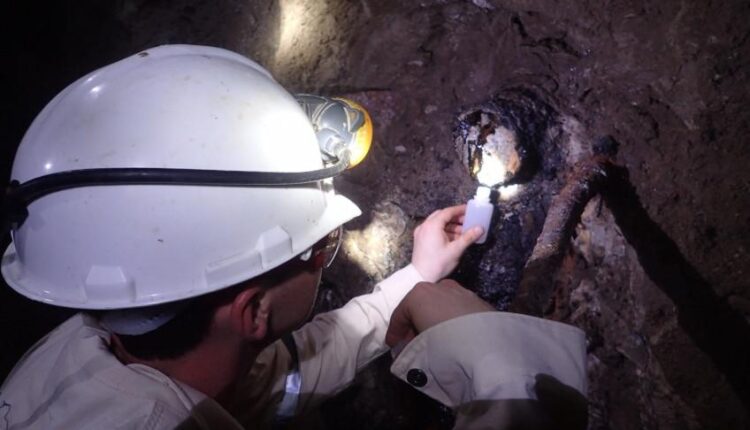©2021 Reporters Post24. All Rights Reserved.
A team of international researchers discovered 1.2-billion-year-old groundwater 1.8 miles (2.9 km) below the Earth’s surface in a uranium and gold mine in Moab Khotsong, South Africa, a press statement reveals.
The new discovery could allow us to better understand how hydrogen and helium are produced deep within the Earth, and it could also provide clues as to how life survives in some of the Earth’s deepest, darkest recesses.
One of the scientists behind the discovery described it as a “Pandora’s Box of helium-and-hydrogen-producing power” that can be utilized to our benefit.
The researchers, who published their findings in the journal Nature Communications, also believe their findings provide valuable insight into processes that may allow microbial life to thrive on distant planets.
A ‘Pandora’s Box’ deep below the Earth’s surface
The discovery of the groundwater allowed the scientists investigating to analyze a process that produces helium and hydrogen far below the Earth’s surface. This could have important implications, as it could help us find vast new reserves of the elements.
“For the first time, we have insight into how energy stored deep in the Earth’s subsurface can be released and distributed more broadly through its crust over time,” says Oliver Warr, research associate in the Department of Earth Sciences at the University of Toronto and lead author of the study. “Think of it as a Pandora’s Box of helium-and-hydrogen-producing power, one that we can learn how to harness for the benefit of the deep biosphere on a global scale.”
Ten years ago, scientists discovered billion-year-old groundwater below the Canadian Shield. This “was just the beginning, it seems,” said Barbara Sherwood Lollar, professor in the Department of Earth Sciences at the University of Toronto and corresponding author. With the new discovery in Moab Khotsong, “we have found that the extreme outposts of the world’s water cycle are more widespread than once thought,” she continued.
Ancient groundwater provides clues about alien worlds
Uranium and other radioactive elements were naturally formed in the rocks surrounding the groundwater. The presence of these elements provides new clues as to how the groundwater played a role as a power generator for chemolithotrophic (rock-eating) groups of cohabitating microorganisms that are known to live in the Earth’s deep subsurface.
The radiation from these elements breaks apart water molecules in a process called radiolysis, which produces large concentrations of hydrogen. Hydrogen, meanwhile, is a vital energy source for subsurface microbial life that has no access to energy from the sun for photosynthesis.
The researchers found that radiogenic helium diffuses up from the deep Earth with impressive efficiency. “Solid materials such as plastic, stainless steel, and even solid rock are eventually penetrated by diffusing helium, much like the deflation of a helium-filled balloon,” Warr explained. “Our results show that diffusion has provided a way for 75 to 82 percent of the helium and neon originally produced by the radiogenic reactions to be transported through the overlying crust.”
Though this helium could be useful for humans, as the world’s helium reserves are running dry, the researchers also stress the important role it has played for microbial life. “Humans are not the only life-forms relying on the energy resources of the Earth’s deep subsurface,” Warr continued. “Since the radiogenic reactions produce both helium and hydrogen, we can not only learn about helium reservoirs and transport, but also calculate hydrogen energy flux from the deep Earth that can sustain subsurface microbes on a global scale.”
The researchers said their study is vital for understanding the role these processes play in the propagation of microbial life — especially as similar processes could be occurring on distant planets with similar elemental compositions. Their investigation could provide vital information for future missions to Mars, Titan, and Europa.


